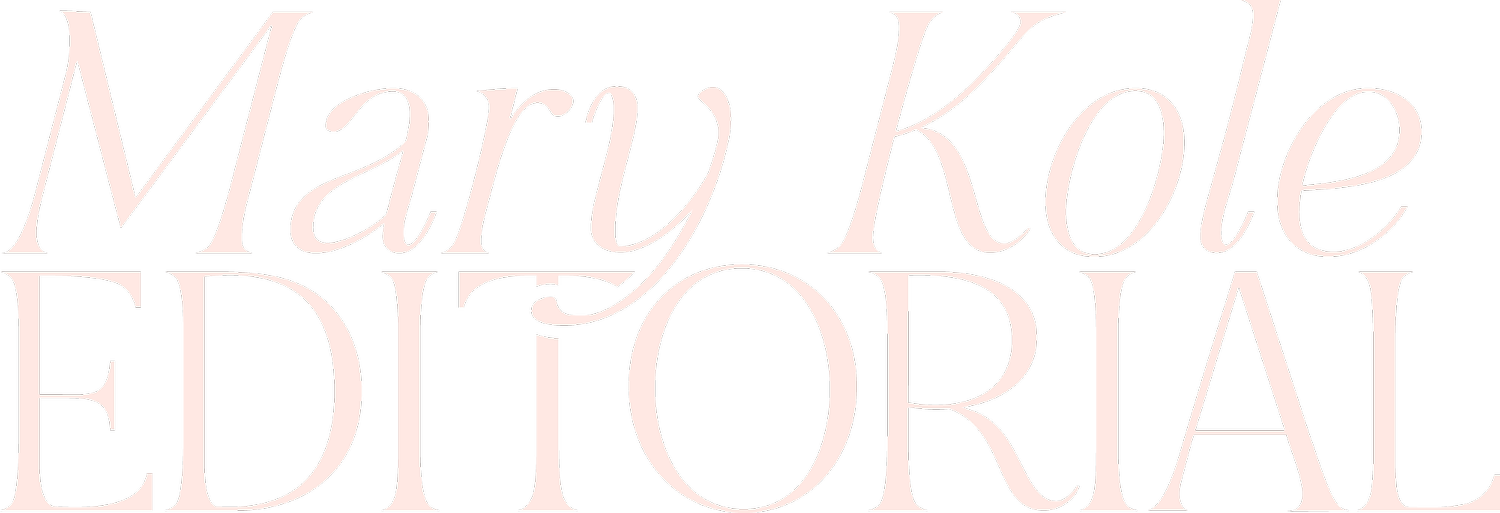How to Approach a Publishing Editorial Letter
By Mary Kole
Mary Kole is a former literary agent, freelance editor, writing teacher, author of Writing Irresistible Kidlit, and IP developer for major publishers, with over a decade in the publishing industry.
The editorial letter is a promising milestone that some writers will encounter on their journey to book publication. It can come from a literary agent initially (if the agent is giving you writing notes after taking you on as a client or a revise and resubmit letter) or from an editor at a publishing house (if you’ve secured a book deal). An editorial letter can be a long and intimidating document, but it generally has one purpose: to make your manuscript stronger and more marketable. Here’s how to approach one if and when you get it.
An Editorial Letter From a Literary Agent
A literary agent uses an editorial letter to transmit revision ideas to a client. More often than not, they send one of these when they are officially working with a writer. But sometimes, a literary agent can send an editorial letter as part of a revise and resubmit letter. It’s important to note that this happens before a writer and agent are working together, and there’s no obligation to revise according to this feedback unless you really agree with it. (If the feedback seems completely off-base, make sure you’re approaching it with an open mind, first. If you have truly considered it and it still makes little sense, remember that not every agent will be a fit for every writer and stand by your creative integrity. This kind of difference in artistic vision can rear its ugly head later, and you might want to reconsider working with the agent who gave you the ill-fitting editorial letter.)
There is no guarantee with a revise and resubmit letter. (There is no guarantee with anything in publishing and agents aren’t a magic bullet, but that’s a different article for a different day.) The literary agent is basically asking you to revise on spec and they want to reserve their judgment until they see a new version of the manuscript. It’s their way of saying, "I'm going to give you feedback and work with you as if you were already my client, but there are some things I'm uncertain about and I don't want to make an official offer of representation yet."
One the one hand, an agent revision request is an amazing show of faith—and proof that a Real, Live Publishing Professional believes in you. On the other hand, it can be a bit tricky to face an editorial letter without any promises. It’s a risk for the agent as well. Despite the additional time and effort they’ve put into their editorial letter, the writer may send back a lackluster revision. This creates an awkward situation for both parties.
Whenever I would feel passionate about a manuscript when I was a literary agent, I would strive to make an offer of representation rather than an editorial letter first. I was an extremely editorial agent and I’d want to dig into the project with the client, with both of us invested. After all, if I was taking the time to invest in a project and appreciate its potential, I wanted to give the writer a good faith gesture. Some agents are the exact opposite, they’ll offer a revise and resubmit letter to their entire “maybe” pile and see which writers have the self-editing chops to get to the next level.
If you don’t want to do this kind of revision work before signing an agency agreement, or if you categorically disagree with the feedback in the editorial letter, you can decline to revise. That’s fine, but it likely means you won’t be working with the agent who offered the feedback.
If you’re already working with the literary agent, you obviously should address most of the revision points. (There should be little room for disagreement here because you will have ideally already talked to the literary agent about proposed revisions before you accept an offer of representation in the first place.)
An Editorial Letter From a Publishing House Editor
Now let’s get into the nitty gritty of working with a publishing house editor on an editorial letter. This is the Big Show of publishing, where you have gotten a book deal, are under contract, and no longer revising on spec because you’ve (ideally) been paid for the work, especially if you’re working in the traditional publishing model. You got the editorial letter, you are revising with purpose … now what?
What type of changes are usually called for in an editorial letter? Are there common mistakes that writers make at this stage? What is the usual turnaround time for revisions? And is every situation different? (The last point is maybe a leading question, ha!) I’m afraid that this is where things get very individual. Publishing is a very slow-moving business, so you might be waiting a long time for your editorial letter, or a revision response, even if you’ve been acquired.
When it comes to publishing editors offering an editorial letter and revising with their writer under contract, communication is key. I get that writers are often so afraid of stirring the pot or seeming difficult that they don’t actually want to talk to their editors. This is a mistake and can lead to issues down the road. Unless something terrible happens, you are not likely to jeopardize your book contract by having some questions or responses to an editorial letter.
If you have a literary agent, you can also ask for their advice if you have questions about an editorial letter. How comprehensive a publishing house editor’s requests are will depend entirely on the manuscript and the publishing house’s vision for the project (which will be discussed at the acquisitions stage, so you’re likely already in agreement about major issues). Ideally, everyone is on the same page when it comes to the contents of the editorial letter.
The editor will take a close look at your manuscript and give it some line editing as well as typing up a longer editorial letter. During this first round, if you end up doing more than one round, you’ll mostly pay attention to big picture issues like character, plot, story structure, and pacing. Does this story really need two best friends? Can we make the subplot more exciting? Does the protagonist's relationship with her mother need more emphasis? These are examples of what might appear in an editorial letter.
These larger modifications an editor proposes should bring the manuscript up a notch, making the storytelling far more engaging and marketable—as the publishing house is responsible for marketing and positioning the project.
As soon as you receive an editorial letter, you might have a bit of a freakout. A few days go by and, most likely, you will realize that the editor is in your corner. If there are any questions about the editorial letter, the editor should be open to discussion. It takes a village to raise a book during the publishing phase, and they are one of the most important people spearheading that process.
The Editorial Letter and Beyond
You might not want to hear it right now, while you’re self-editing and slogging through the slush pile, but you might be asked to revise multiple times after you connect with a literary agent, and even after a book deal. After completing your first revision, you might be asked to revise again. Approach it with patience and understanding, which are two key writer tools you should be working to develop. Prioritize quality over speed. Ask for deadline extensions if needed. Revision is a complex task which cannot be rushed.
At this juncture, it's entirely up to the editor to decide when the project is done. They are the one who decides whether another editorial letter is reasonable, or if they can push the manuscript to the next stage of the process—into copyediting, layout, and design. The timing of this process will be stipulated by your book contract, but can also change, depending on forces inside and outside of your control. (Supply chain issues and a global pandemic are recent examples of curveballs that authors have faced.)
Unexpected creative situations can arise during this process. For example, sometimes a writer chooses to go in a completely different direction and, instead of improving the manuscript, they make it worse. Ack! This has happened to every agent and editor, and it's a miserable experience. Everyone has different strengths and weaknesses when it comes to writing, and it's difficult to know how proficient a writer is at revision until they've done it. Some writers are prone to simply take the editorial letter at face value and check the action items off a mental “To Do” list, but doing so is shortsighted.
When an agent or publishing editor send you an editorial letter, they actually want you to spend time to creatively refine, finesse and deepen the work. Writers who aren’t yet experts at self-editing may quickly run through each page but never pause to think how they can bring their manuscript to the next level.
At this point in the publishing journey, most scenarios are very individual. How things go will depend on the writer, the acquisitions editor, and the publisher. However, I can't emphasize enough that the most common mistake I witness when dealing with an editorial letter is impatience. That is not the right approach. Publishing moves slowly, give yourself the grace to do the same, especially in this all-important home stretch after the editorial letter, and you need to be able to roll with it and do your best work.

Click here to purchase Irresistible Query Letters, my book on query letters, including over forty examples with comprehensive notes on each one. There’s a ton of submission advice, best practices, and insider information in these pages, and you’ll really enjoy seeing what other writers are doing in the slush.



